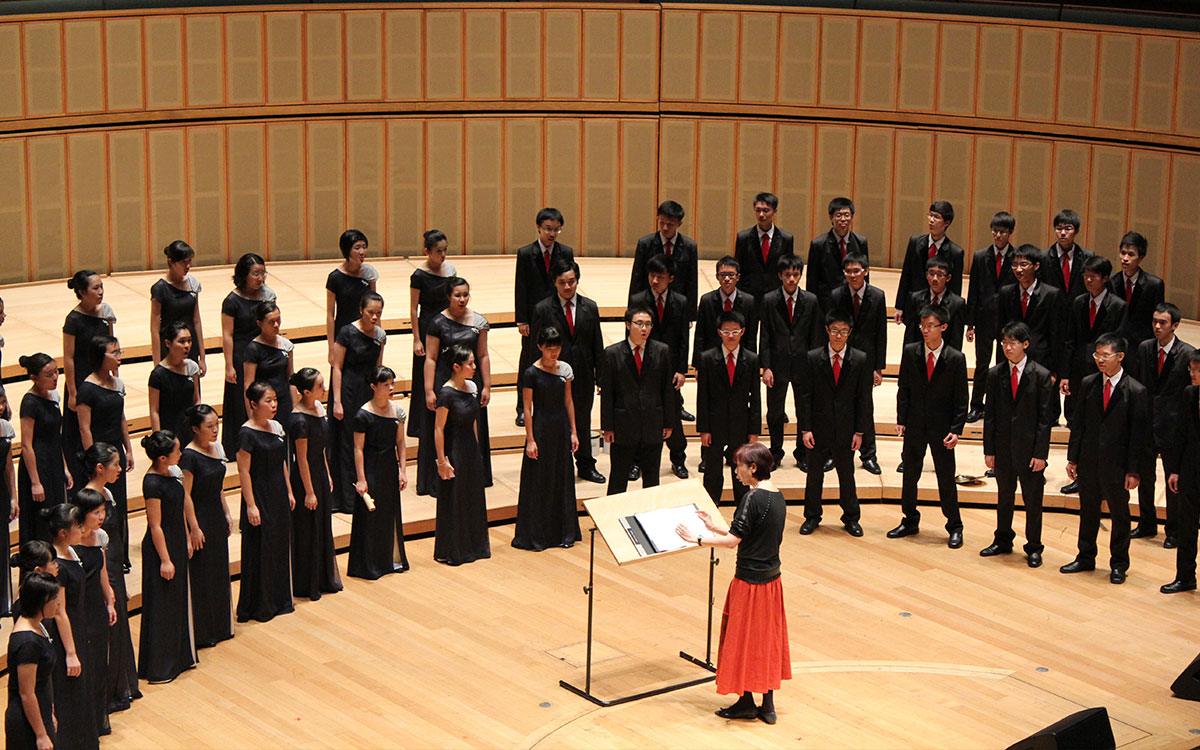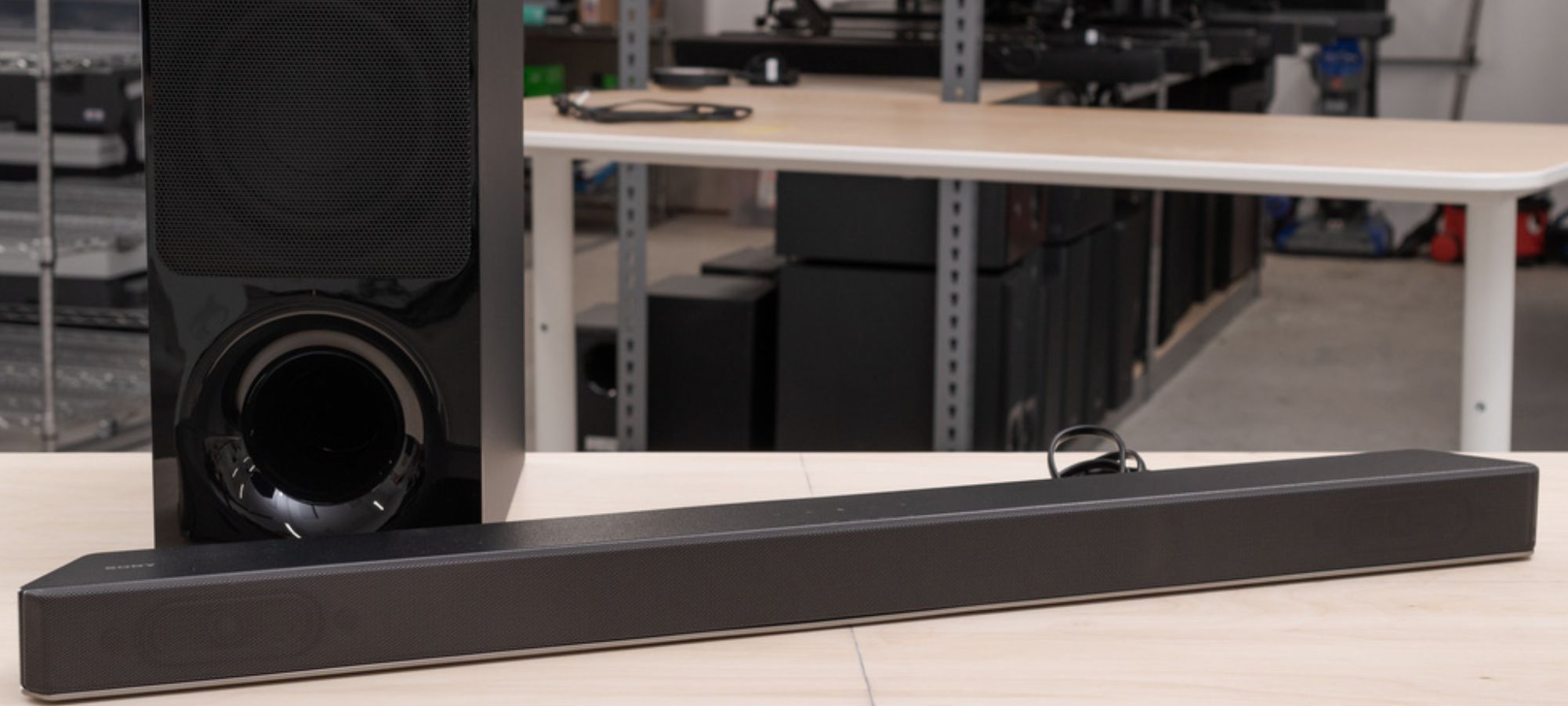Home>Production & Technology>Soundproofing>Where Should You Put Soundproofing


Soundproofing
Where Should You Put Soundproofing
Published: January 26, 2024
Looking for the best place to install soundproofing? Discover effective soundproofing solutions for your home or office.
(Many of the links in this article redirect to a specific reviewed product. Your purchase of these products through affiliate links helps to generate commission for AudioLover.com, at no extra cost. Learn more)
Table of Contents
Introduction
Welcome to the world of soundproofing! Whether you’re a musician looking to create a home studio, a homeowner looking to reduce noise from outside, or an office manager aiming to create a quiet work environment, soundproofing is the solution you need. Soundproofing involves various techniques and materials to minimize or eliminate sound transmission between spaces. In this article, we will explore the importance of soundproofing and provide insights on where you should focus your soundproofing efforts.
Living in a noisy world can be stressful and disruptive. The constant barrage of traffic noise, loud neighbors, or even just the general hustle and bustle of daily life can impact your well-being. That’s where soundproofing comes in. By taking steps to soundproof your living or working space, you can create a calm and peaceful environment where you can relax, concentrate, and enjoy uninterrupted activities.
When it comes to soundproofing, there is no one-size-fits-all solution. Different spaces have different soundproofing needs, and factors such as the type of noise, the structure of the building, and your budget will all come into play when determining the best approach. That’s why it’s essential to understand the various options available and where they are most effective.
In this article, we will explore soundproofing options for walls, floors, ceilings, doors, windows, and even HVAC systems. We will discuss the pros and cons of each method to help you make an informed decision about where to focus your soundproofing efforts. Whether you’re looking to create a peaceful home, a professional-grade recording studio, or a quiet office space, we’ve got you covered.
So let’s dive into the world of soundproofing and discover how to create a quieter, more peaceful environment for you and those around you!
Understanding Soundproofing
Before we delve into the specifics of soundproofing, it’s important to have a basic understanding of how sound travels and how soundproofing measures work to minimize its transmission. Sound is created by vibrations that travel through the air or other materials in the form of waves. When these waves encounter an object, they can be absorbed, reflected, or transmitted.
When it comes to soundproofing, the goal is to prevent sound waves from transmitting between spaces. This involves using materials and techniques that help absorb or block the sound waves, reducing the amount of noise that reaches the other side. Soundproofing can be achieved through a combination of techniques, including insulation, mass, decoupling, damping, and sealants.
Insulation is one of the primary methods used in soundproofing. It involves adding materials with high sound absorption properties to walls, floors, and ceilings. These materials, such as mineral wool or fiberglass, help absorb the sound waves, preventing them from bouncing around and reducing the overall noise level.
Mass is another important factor in soundproofing. Adding mass to walls, ceilings, and floors helps block the sound waves from passing through. Materials like drywall, mass-loaded vinyl, or concrete are commonly used to increase mass and create a barrier against noise transmission.
Decoupling is a technique that involves separating two surfaces to minimize sound transfer. By creating an air gap between walls, floors, or ceilings, sound vibrations are disrupted, reducing the amount of noise that can travel through the structure.
Damping is the process of reducing vibrations in surfaces. By using materials that can absorb and dissipate vibrations, such as rubber or cork, the impact and resonance of sound waves can be minimized, resulting in a quieter environment.
Sealants play a crucial role in soundproofing by closing any gaps or cracks that might allow sound to leak through. Using caulk or acoustic sealant around windows, doors, and electrical outlets can significantly reduce sound transmission.
Understanding these basic principles of soundproofing can help you make informed choices when selecting the appropriate soundproofing materials and techniques for your specific needs. By combining these techniques and materials in a strategic manner, you can achieve the desired level of soundproofing in your space.
Factors to Consider
When deciding where to invest your efforts in soundproofing, it’s important to take several factors into consideration. Here are some key factors to keep in mind:
- Noise Source: Identify the primary source of the noise you want to block. Is it external noise from traffic or neighbors? Or is it internal noise, such as loud appliances or music? Understanding the source of the noise will help you determine the most effective soundproofing solutions.
- Room Function: Consider how the room is used and what activities take place in it. If it’s a home office or recording studio, you may need more extensive soundproofing measures compared to a bedroom or living room where noise reduction may be more focused on comfort.
- Budget: Determine your budget for soundproofing. Some methods, such as adding mass to walls or installing soundproof windows, can be more expensive than others. Having a clear budget in mind will help you narrow down your options.
- Building Structure: Assess the structure of your building. Different construction materials and designs can have an impact on sound transmission. For example, older buildings with thin walls may require more soundproofing efforts compared to newer constructions with better insulation.
- Noise Reduction Level: Consider how much noise reduction you’re aiming to achieve. Soundproofing methods can provide varying levels of noise reduction, so it’s important to have a realistic expectation of the outcome. Keep in mind that complete sound elimination may not be possible, but significant reduction can be achieved.
- Aesthetics: Take into account the visual impact of soundproofing materials on the aesthetics of your space. Some methods may be more visually intrusive than others, so it’s important to select options that align with your desired interior design.
By considering these factors, you can prioritize your soundproofing efforts and make informed decisions about where to focus your resources. Whether it’s creating a peaceful bedroom, a quiet home office, or a soundproofed recording studio, understanding these factors will help you achieve the desired noise reduction and enhance the overall comfort of your space.
Soundproofing Options for Walls
Walls are a primary pathway for sound transmission, making them a key focus for soundproofing efforts. Here are some effective soundproofing options for walls:
- Insulation: Adding insulation within the walls can significantly reduce noise transmission. Materials like mineral wool or fiberglass batts are commonly used for their sound-absorbing properties. Insulation can be installed by filling the wall cavities or by adding an extra layer of insulation to the existing walls.
- Mass-Loaded Vinyl (MLV): MLV is a dense, flexible material that can be attached to the walls. It adds mass to the wall, reducing sound transmission. MLV is particularly effective at blocking low-frequency noises.
- Double Drywall: Installing an additional layer of drywall on the existing wall creates an additional barrier for sound. The two layers of drywall are separated by a damping compound, such as Green Glue, which helps reduce vibrations and sound transfer.
- Acoustic Panels: These panels are designed to absorb sound waves and reduce echo within a room. They can be installed on the walls as a decorative element that also enhances soundproofing.
- Soundproof Wallpaper: Soundproof wallpaper is specially designed with sound-blocking properties. It can be applied to the walls to help reduce noise transmission.
- Sealants and Weatherstripping: Use acoustic sealants or weatherstripping to seal any gaps, cracks, or air leaks in the walls. This will prevent sound leakage and improve overall soundproofing.
Combining multiple soundproofing methods can yield the best results. For example, an effective approach might include installing insulation, adding mass-loaded vinyl, and using acoustic panels. By layering these techniques, you can create a more efficient sound barrier and reduce noise transmission through the walls.
Remember that the effectiveness of soundproofing methods can vary depending on the specific noise source and the construction of your walls. It’s recommended to consult with a professional to assess your needs and determine the most appropriate soundproofing options for your walls.
Soundproofing Options for Floors
When it comes to soundproofing, addressing the floor is essential, especially in multi-level buildings or spaces where foot traffic or impact noise is a concern. Here are some effective soundproofing options for floors:
- Underlayment: Installing an acoustic underlayment beneath the flooring can help reduce impact noise and vibrations. These underlayments are made of materials like rubber, cork, or foam, which absorb and dampen the sound.
- Carpet or Rugs: Adding carpet or area rugs to the floor can help absorb sound and reduce impact noise. The thickness and density of the carpet or rug play a role in its soundproofing capabilities.
- Floating Floors: A floating floor system involves placing a layer of sound-dampening material, such as acoustic underlayment or cork, between the subfloor and the flooring material. This helps isolate the floor from the structure, reducing sound transmission.
- Resilient Channels: Resilient channels are metal strips that are attached to the floor joists before installing the subfloor. They create a gap between the subfloor and the joists, breaking the direct path of sound transmission.
- Floor Soundproofing Mats: Soundproofing mats, such as mass-loaded vinyl or rubber, can be laid directly on top of the existing floor. These mats add mass and insulation, reducing sound transmission.
- Sealants: Just like with walls, using acoustic sealants to fill gaps and cracks in the flooring can help prevent sound leakage and improve overall soundproofing.
Keep in mind that the effectiveness of these soundproofing options can depend on factors such as the type of flooring, the construction of the building, and the specific noise concerns you’re trying to address. It’s recommended to consult with a professional to determine the most suitable soundproofing methods for your specific situation.
Combining different soundproofing techniques, such as using underlayment along with a floating floor system or laying down soundproofing mats before installing carpet, can provide optimal results in reducing impact noise and improving sound insulation for your floors.
Soundproofing Options for Ceilings
When it comes to soundproofing, ceilings play a significant role in preventing sound transmission between floors or blocking airborne noise from above. Here are some effective soundproofing options for ceilings:
- Insulation: Adding insulation to the ceiling cavity can help absorb sound and reduce noise transmission. Materials like mineral wool or fiberglass batts are commonly used for their sound-absorbing properties.
- Acoustic Panels: Installing acoustic panels on the ceiling can help absorb sound waves and reduce echo within the room. These panels are designed to enhance soundproofing while adding a decorative element to the space.
- Resilient Channel: Installing resilient channels on the ceiling before attaching the drywall creates an air gap between the ceiling joists and the drywall. This decouples the drywall from the structure, reducing the transmission of sound vibrations.
- Mechanical Sound Isolation: Mechanical sound isolation refers to using special clips and channels to suspend the ceiling from the floor structure above. This breaks the direct path for sound transmission and reduces noise transfer.
- Mass-Loaded Vinyl (MLV): Adding a layer of mass-loaded vinyl to the ceiling can help block sound transmission. MLV is a dense, flexible material that adds mass and soundproofing properties to the ceiling.
- Sealants: Using acoustic sealants to seal any gaps or cracks in the ceiling can minimize sound leakage and improve overall soundproofing.
It is important to assess the specific noise concerns and the construction of your ceiling to determine the most effective soundproofing options. Consulting with a professional can provide valuable insight and guidance specific to your needs.
In some cases, combining multiple methods, such as using insulation along with resilient channels or adding acoustic panels to the ceiling, can yield the best results in reducing noise transmission and enhancing the soundproofing of your ceilings.
Soundproofing Options for Doors
Doors can often be a major source of noise leakage due to their hollow structure and gaps around the frame. Fortunately, there are several effective soundproofing options for doors that can help minimize noise transmission. Here are some commonly used methods:
- Weatherstripping: Installing weatherstripping around the door frame is an easy and affordable way to reduce sound leakage. Weatherstripping materials, such as adhesive-backed foam tape or door sweeps, create a tight seal, preventing noise from seeping through gaps.
- Sealing the Door Gaps: Similar to weatherstripping, using acoustic sealants or draft stoppers to seal any gaps between the door and the frame can significantly reduce sound transmission. Pay close attention to the bottom of the door and the space around the hinges.
- Soundproof Blankets or Curtains: Hanging soundproof blankets or curtains over the door can help absorb sound waves and reduce noise transmission. These dense and heavy coverings create a barrier that blocks sound from entering or leaving the room.
- Mass-Loaded Vinyl (MLV) Door Coverings: Applying a layer of mass-loaded vinyl to the door can enhance its soundproofing capabilities. MLV is a dense material that adds mass and helps to block sound waves from passing through the door surface.
- Upgrading to Solid-Core Doors: Hollow-core doors are notorious for allowing sound to pass through easily. Consider replacing them with solid-core doors, which are denser and provide better sound insulation.
- Acoustic Door Panels: Installing acoustic panels specifically designed for doors can improve their soundproofing properties. These panels are made from sound-absorbing materials and can be attached to the surface of the door.
Each of these options is effective in its own way, and the choice will depend on your specific needs and concerns. Combining multiple methods, such as using weatherstripping, adding mass-loaded vinyl, and hanging soundproof curtains, can provide even better soundproofing results for your doors.
Remember to assess the condition and structure of your door before choosing the appropriate soundproofing method. If necessary, consult with a professional to determine the most suitable approach to soundproof your doors effectively.
Soundproofing Options for Windows
Windows are another common entry point for external noise, but luckily, there are various soundproofing options available to help minimize noise transmission through windows. Here are some effective methods to consider:
- Double Glazing: Installing double glazed windows involves adding a second layer of glass to the existing windows, creating an air gap in between. This additional layer acts as an insulation barrier against sound, reducing noise transmission.
- Soundproof Window Inserts: Window inserts are custom-made panels, usually made from acrylic or laminated glass, that fit over the existing windows. They create an additional layer of insulation to block out noise and improve soundproofing.
- Sealing and Weatherstripping: Use weatherstripping and caulk to seal any gaps or cracks around the window frames. This helps prevent sound leakage and improves overall sound insulation.
- Heavy Curtains or Drapes: Hanging heavy curtains or drapes over windows can help absorb sound waves and block external noise from entering the room. Look for curtains made from thick, dense fabrics to maximize their soundproofing capabilities.
- Decoupling Window Treatments: Installing window treatments, such as blinds or shades, can help reduce noise transmission. Opt for treatments that are mounted outside of the window frame to minimize sound vibration transfer.
- Window Film: Applying a soundproofing window film can improve the acoustic insulation of the glass. These films are typically adhesive and add an extra layer to the window, reducing the impact of sound waves.
Every soundproofing option for windows has its own advantages, and the most suitable choice will depend on factors such as budget, desired level of noise reduction, and aesthetic preferences. It may also be beneficial to consult with a professional to evaluate your specific needs and determine the optimal soundproofing solution for your windows.
Keep in mind that combining multiple methods, such as using double glazing along with soundproof window inserts or heavy curtains, can yield even better soundproofing results and create a more peaceful and quiet environment.
Soundproofing Options for HVAC Systems
HVAC (Heating, Ventilation, and Air Conditioning) systems can generate noise that travels through the ductwork and into living or working spaces. To minimize the noise produced by HVAC systems, consider the following soundproofing options:
- Acoustic Duct Insulation: Adding acoustic insulation to the ductwork can help reduce noise transmission. Acoustic duct linings or wraps made of materials like fiberglass or mineral wool can absorb sound vibrations and prevent them from being transmitted through the ducts.
- Vibration Isolators: Installing vibration isolators can help reduce noise caused by vibrations from the HVAC system. These rubber or neoprene pads or mounts are placed between the equipment and the mounting surface to dampen vibrations and minimize sound transmission.
- Silencers: Installing silencers or acoustic attenuators within the ductwork can help reduce noise generated by the HVAC system. These devices are designed to decrease the noise level by decreasing airflow velocity or using sound-absorbing materials.
- Air Grilles and Diffusers: Using air grilles and diffusers that are designed for noise reduction can help minimize the sound produced by the HVAC system. Look for models with built-in sound baffles or dampers to reduce noise transmission into the room.
- Noise Barrier Panels: Installing noise barrier panels around the HVAC equipment can help contain and reduce noise transmission. These panels are made of soundproofing materials, such as mass-loaded vinyl, which block sound waves and minimize noise leakage.
It’s important to assess the specific noise concerns and the configuration of your HVAC system to determine the most effective soundproofing options. Depending on the situation, a combination of different methods may provide the best results.
Consulting with a professional in HVAC or acoustics can provide valuable insights and help you make informed decisions about the most appropriate soundproofing techniques for your HVAC system. By addressing the noise generated by your HVAC system, you can create a quieter and more comfortable environment.
Conclusion
Soundproofing is a valuable and effective solution for reducing noise transmission and creating a quieter and more comfortable living or working space. By understanding the principles of soundproofing and considering various factors such as noise source, room function, budget, building structure, noise reduction level, and aesthetics, you can make informed decisions about where to focus your soundproofing efforts.
Throughout this article, we have explored soundproofing options for walls, floors, ceilings, doors, windows, and HVAC systems. Each of these areas presents unique challenges and requires specific soundproofing techniques. Whether it’s adding insulation to walls, using underlayment for floors, installing acoustic panels for ceilings, applying weatherstripping for doors, using double glazing for windows, or implementing acoustic insulation for HVAC systems, there is a wide range of options available to suit your needs.
Remember, soundproofing is a combination of methods, and the effectiveness of each technique can vary depending on factors such as the type of noise, the construction of the building, and your desired level of noise reduction. It’s important to assess your specific situation and consult with professionals when necessary to determine the most suitable soundproofing methods.
By implementing soundproofing measures, you can enjoy a quieter and more peaceful environment, free from the disruptions of external noise or sound leakage. Whether you’re creating a private home studio, seeking tranquility in your home, or aiming to create a productive office space, effective soundproofing can enhance your overall well-being and quality of life.
So, take the necessary steps to soundproof your space, and enjoy the benefits of a calmer and more serene environment where you can truly relax, focus, and enjoy peace of mind.











